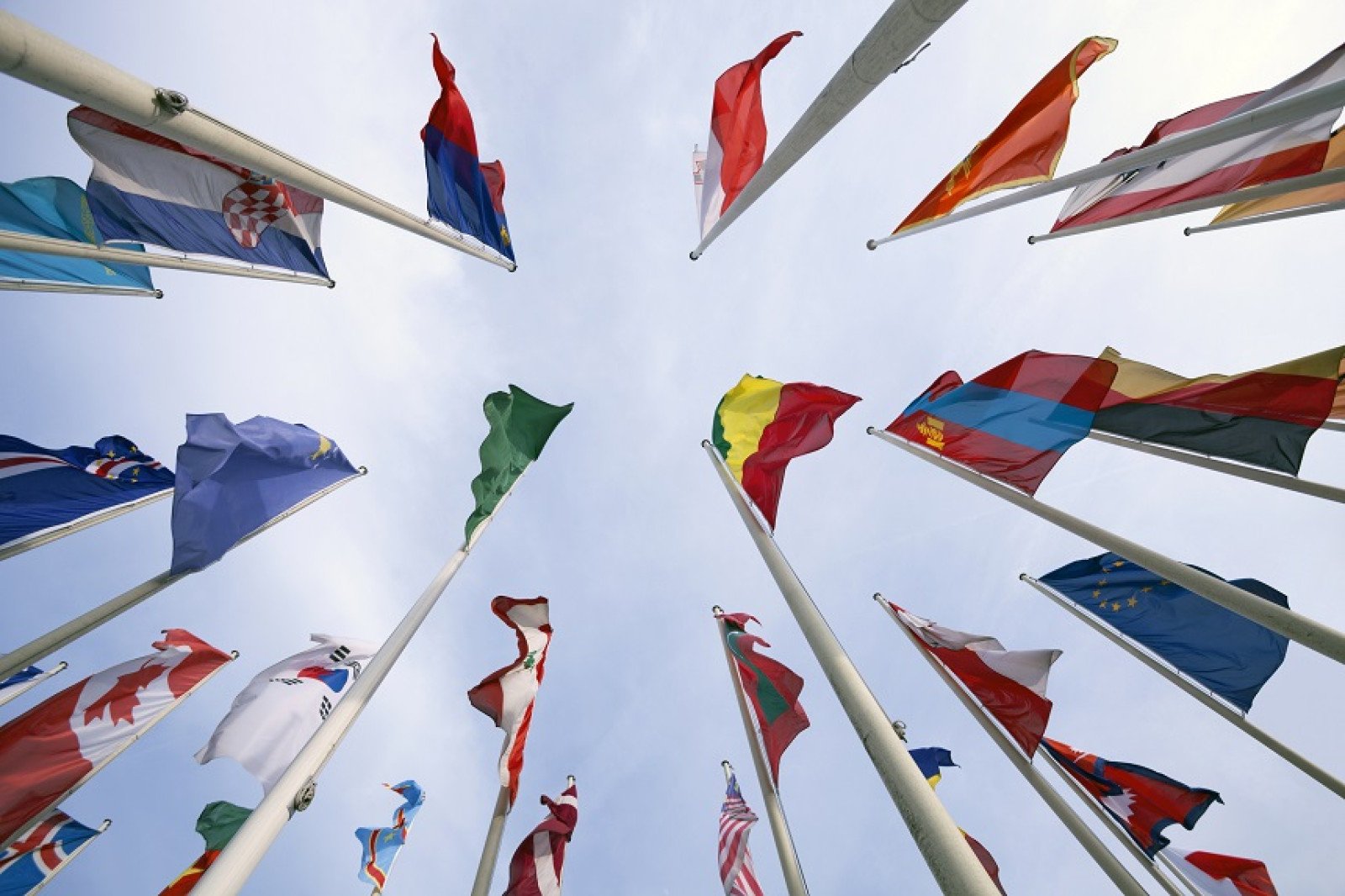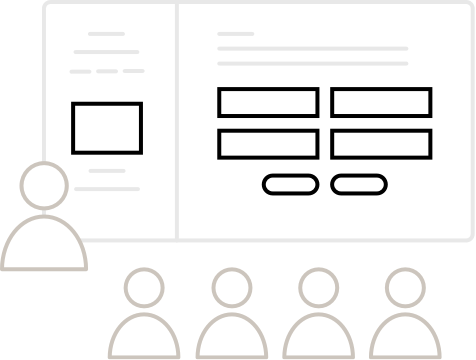Understanding the Paris Agreement
Explore how collective action on climate change is being addressed with the Paris Agreement.

Overview
Learn about the Paris Agreement, explore some of the challenges of implementation, and find out what countries are doing to meet their targets. To complete the activity, consider the benefits and challenges of working towards these targets.
Participate as a class
A single screen and laptop is used for watching the video and answering questions together as a class.
Before you begin, make sure:
- You’re connected to the internet
- You’re projecting your screen for the class to see

Need help with using quiz activities in the classroom?
Check out
our
Getting started guide.
Instructions
What you'll need
- Laptop and projector
- 20 small objects, to act as game pieces, for each group of 4-5 students like bingo chips or small pebbles. Items do not all need to be the same, but avoid objects that might cause injury if grabbed, like pencils
- Individual whiteboards or scrap paper for students to make A, B, C, D cards
- “Paris Agreement” student handout, print 1 copy per student
- “Paris Agreement” teacher answer key
- What is the Paris Agreement? video (Source: UN Climate change)
- What is electrification? video
- Start by discussing what the United Nations is, when and why it was created, and its role in the world today. Complete “The United Nations (UN), then and now” activity.
- Next, play a game to help students understand the challenges of collective action. Divide students into groups of 4-5, sitting around a table or desks.
- In the middle of each table or desk, place four game pieces per person. Explain that each student represents a country and the game pieces are resources that every country needs and wants, like water, energy, and money. The more resources you have, the richer your country will be.
- Assign each student in the group a country A, B, C, D, or E (groups of four will not have a country “E”). Write these details on the board:
- Country A needs five game pieces to survive and be healthy.
- Country B needs four game pieces to survive and be healthy.
- Countries C, D, E each need at least three game pieces to survive and be healthy.
- Tell countries A and B to stand two steps away from the group table and countries C, D, E to stand 10 steps away.
- Play the game in four rounds:
- Round 1: When you say “go” everyone tries to get as many game pieces as possible.
- Round 2: Country A is in charge and gets to hand out the game pieces however many they want.
- Round 3: Each country takes a turn taking one game piece, until they run out. Country A goes first.
- Round 4: The group has three minutes (set a timer) to plan together about how they will distribute the game pieces. If they don’t agree, then no one gets any game pieces.
- After each round, stop and ask students:
- Did everyone get what they needed?
- Did some countries get more than what they needed? Did some countries get less?
- Why do you think that happened? What are the possible consequences?
- Reset game pieces after each round and countries return to their starting positions.
- At the end of the game, have students share their experience. Which version seemed the most fair? Is there another version they think would work better? How easy was it to come up with a plan together as a group?
- Countries acting individually often make decisions that may affect people in other countries or other parts of the world. Most governments will make decisions that are best for their own people. This means that countries with less power and money are often left without what they need to thrive or may get exploited by powerful countries.
- Climate change is one of those situations. Rich countries have more greenhouse gas emissions than poorer countries because they drive more cars longer distances, fly more airplanes, have bigger homes, and buy more things. Poor countries have less money to recover when there are disasters from climate change such as floods, sea level rise, hurricanes, fires, and heat waves, caused by rich countries with high greenhouse gas emissions. For global problems like climate change, countries develop agreements with each other to solve these problems.
- Launch quiz. Have students answer trivia questions to learn about the Paris Agreement. They can say out the answers out loud or use their own device (ensure you select multi-device).
- After completing the quiz, watch What is the Paris Agreement? video.
- People around the world are taking action to meet the Paris Agreement targets. Here in B.C., we have an electrification plan to reduce the use of fossil fuels and move to clean energy. Watch this video about BC Hydro’s electrification plan.
- As a class, discuss why some countries are more eager to act on climate change than others. What factors influence whether a country wants to change quickly or not? Some countries may think that they're less affected by climate change, and therefore less eager to change, even if they are high emitters of greenhouse gas due to development. Poor countries have fewer resources to make change but have contributed the least to the problem. They are, however, suffering the effects, since they're often in more vulnerable climate zones, and have weaker infrastructure and disaster responses.
- Encourage students to think about how people in different parts of the world are affected in different ways. Heat waves in India make it very difficult for farmers who must be outside in the heat to make a living. Droughts and floods may make some places uninhabitable, or not possible to grow food and access water, so they must leave, causing large scale migration.
- Discuss benefits for a country if they meet their Paris Agreement targets and reflect on possible challenges reaching those targets. Using Canada as an example, ask students how Canada might benefit from meeting its Paris Agreement targets. Remind them that Canada is a very large country with a small population, has a strong economy but is not the most powerful on the world stage. Canada is already impacted by climate change like forest fires, droughts, floods and melting ice. Some benefits of reaching our targets may include protecting forests and wildlife, slowing the melting of arctic ice, cleaner air, clean water, more clean energy and avoiding legal penalties for not meeting targets. Challenges may be economic as it’s expensive to make change and many jobs are currently in the fossil fuel sector and difficulty in working with a small population over a huge land mass.
- Give each student a copy of the “Paris Agreement” student handout to fill in the blanks. Discuss the answers as a class.
Modify or extend this activity
- Pull up the “The Paris Agreement commitment” to explore carbon footprints.
- Explore how different countries compare when it comes to meeting their Paris Agreement targets: Climate action tracker.
Curriculum Fit
Socials 6
Big Ideas
- Complex global problems require international cooperation to make difficult choices for the future. Key questions: What are the rights and responsibilities of a global citizen
- Economic self-interest can be a significant cause of conflict among peoples and governments.
- Media sources can both positively and negatively affect our understanding of important events and issues.
Content
Roles of individuals, governmental organizations, and NGOs, including groups representing indigenous peoples global poverty and inequality issues, including class structure and gender.
Assessments
- Assess students’ understanding of the need for collective agreement, and the challenges this entails.
- Assess students’ skills in the group work, collaboration and communication.
- Assess students’ understanding of content when completing worksheet.
Teaching Notes
Paris Agreement
- The Paris Agreement is a legally binding international treaty on climate change. It was adopted by 196 Parties at the UN Climate Change Conference (COP21) in Paris, France, on December 12, 2015. It entered into force on November 4, 2016.
- Its overarching goal is to hold “the increase in the global average temperature to well below 2°C above pre-industrial levels” and pursue efforts “to limit the temperature increase to 1.5°C above pre-industrial levels.”
- The Paris Agreement works on a five-year cycle, where countries submit their national climate action plans, called nationally determined contributions (NDC), expected to increase in ambitious with each new plan.
- The Paris Agreement provides a framework for financial, technical and capacity building support to those countries who need it.
In 2023, the first “global stocktake” will assess progress on Paris Agreement goals. This process will further encourage countries to take ambitious climate actions that keep warming below 1.5°C.
More climate solutions
Comparing climate action in different countries
Source: United Nations
BC Hydro’s electrification plan
B.C. is powered by water which is clean renewable energy. BC Hydro’s electrification plan will help British Columbians make the switch from fossil fuels to clean hydroelectricity to power their homes, businesses and vehicles. Currently 70% of our economy is powered using fossil fuels.






